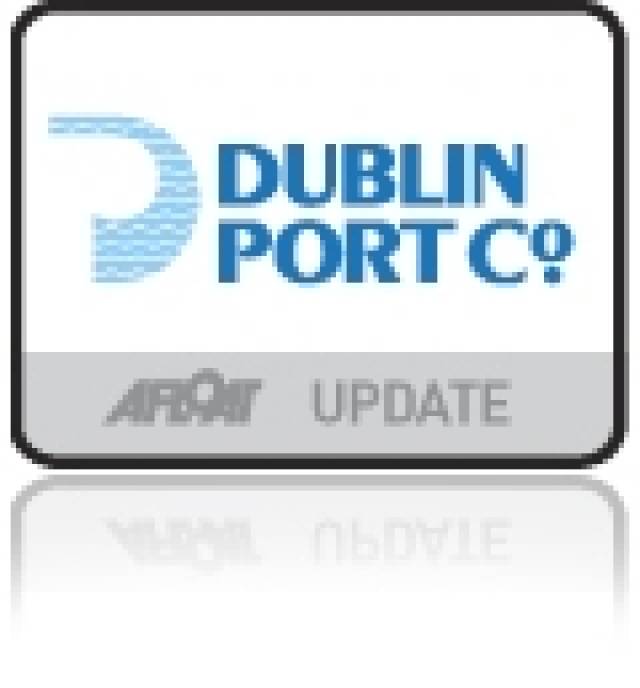#DublinPort - Dublin Port is expecting record trade figures in 2014 on foot of rising passenger levels and that of overall freight throughput.
Third quarter results for 2014 show strong growth in the first nine months as the port saw a 7.3% increase in export and import trade as well to a 5.5% rise in ferry passenger numbers. To put into context this equates to over 635,000 passengers passing through the port (July-September) compared to the same period last year. So far the total for 2014 has reached 1,367,724 passengers.
According to the port company, trade levels continue to increase with total throughput (imports and exports) for Q3 up 5.7% to 7.8 million tonnes.
Total throughput for the year to date was 23.1 million tonnes, representing a 7.3% increase on the same nine month period last year. Compare this to levels in 2007 which had reached 23.6 million tonnes in Q3 of that year, during the height of Ireland's economic activity. With growth in trade set to continue in the coming quarter, 2014 is expected to be a record year for trade at the port.
Eamonn O'Reilly, Chief Executive, Dublin Port Company, said: "The figures for the third quarter show continued growth in trade levels at Dublin Port, with increases across the main areas of our business including import, export, trade vehicle and ferry passenger numbers. With 7.3% growth in total throughput for the year so far, Dublin Port is now on course to exceed the record trading figures recorded in 2007."
Imports for Q3 in 2014 reached over 4.6 million tonnes, while exports amounted to 3.1 million tonnes, representing an increase of 5.5% and 6.1% respectively on the same period last year.
High levels of growth were recorded for trade vehicles, mostly new cars destined for dealerships around the country. There were 14,802 new trade vehicles in Q3, up 48.8% on the same quarter last year. This brings the total number of trade vehicles so far this year to 58,399, up 29.8% on the 44,987 that arrived in the first nine months of 2013.
The figures in this sector underscore the 23% growth in car sales in Ireland published for the first half of the year, which represents more than the total number of sales for all of 2013.
There was particularly strong growth in Lo-Lo sector, which predominantly comprises consumer goods. In Q3, Lo-Lo twenty foot equivalent units (TEU) amounted to 145,374 TEU, bringing the total number of Lo-Lo units so far this year to 418,867 TEU, a 9.4% increase compared to the same period last year.
Operations in Ro-Ro sector also achieved strong results with 210,365 units recorded in Q3, up 7.0% on Q3 2013. This brought the total for the first nine months to 609,775 units, a 7.9% increase compared to the same period last year.
Commenting on the results, Minister for Transport, Paschal Donohoe T.D. said: "Dublin Port has an important role to play at the heart of the national and local economy, facilitating the effective movement of goods to and from the island".
"Today's trading figures show the resilience of the Irish economy and I commend Dublin Port Company on its strong trading performance in the third quarter and year to date. As a barometer of economic growth, the figures point to a very promising year for 2014 with strong increases in both throughput and ferry passenger numbers already evident. This is very welcome news indeed."
As previously reported, the port plans for an €200m expansion, the Alexandra Basin Redevelopment Project which would also require deepening of the channel to accommodate bigger ships, which was discussed at a An Bord Planeala hearing yesterday.






























































